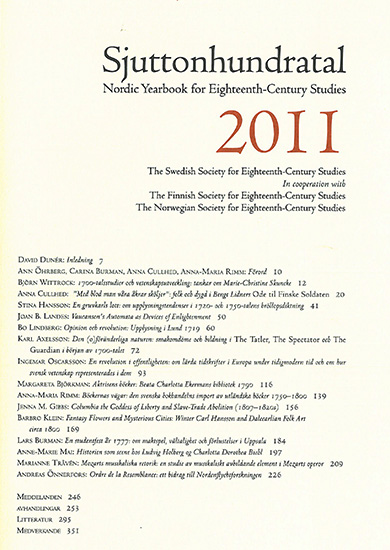Den (o)föränderliga naturen: smakomdöme och bildning i The Tatler, The Spectator och The Guardian i början av 1700-talet
DOI:
https://doi.org/10.7557/4.2387Keywords:
nature, judgement of taste, The Tatler, The Spectator, The Guardian, education, breedingAbstract
The attempt to influence public opinion on the subject of taste constitutes a primary aim in Joseph Addison's (1672-1719) and Richard Steele's (1672-1729) essay-periodicals, The Tatler (1709-1711), The Spectator (1711-1712, 1714), and The Guardian (1713). Addison and Steele emphasize the need for a progressive culture of education, where human nature is continuously refined and improved, and where man is expected to cultivate his nature and his judgement of taste as part of a process of personal self-fulfilment. However, along with such beliefs, Addison and Steele explore a less recognized trait where nature (human nature as well as the chain of being) is much less dynamic and where education and the cultivation of taste are regarded as reprehensible unless they reproduce a predetermined order of nature. By occasionally calling attention to such a trait, Addison and Steele appear to wish to lend balance to the discourse on education and taste, and to reduce the risk implicit in a too radical cultivation of taste and nature, namely, the threat of a blurred concept of the chain of being and a certain indistinctness between diverse social groups.Metrics
PDF views
434
Downloads
Published
2011-10-01
Issue
Section
Peer-reviewed articles









